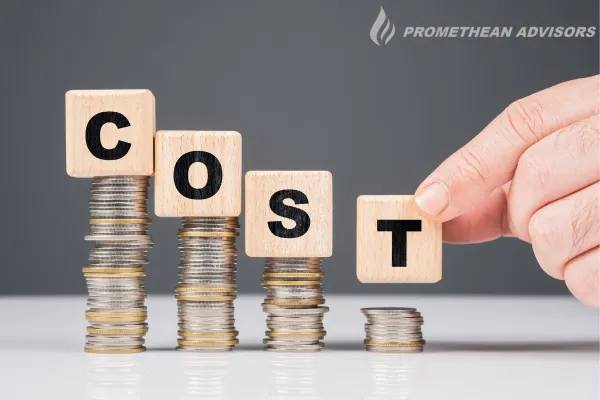
The Hidden Costs of Owner-Driven Businesses (And How to Fix Them)
Let’s be blunt. Too many business owners in manufacturing and industrial companies think they’re running a business, when in reality, the business is running them. They’ve built something big—maybe $5 million, maybe $50 million—but every move, every decision, every problem still runs straight through their desk.
That’s not leadership. That’s a trap.
And here’s the truth: staying in that trap costs more than you think. It costs time, money, opportunities, and even the value of the business itself. I’ve seen it happen hundreds of times, and the pattern is always the same.
So let’s break it down.
The Real Price of Being an Owner-Driven Business
At first, being the one in control feels like strength. You’re the one with the answers, the one the team turns to, the one driving the ship. But as the business grows, that control flips into weakness. Why? Because the whole operation becomes too dependent on you.
Here’s what that dependency really costs:
1. You Become the Bottleneck
Every question funnels to you. Every contract waits for your approval. Every new hire, vendor deal, or customer issue sits in your inbox until you have time. It feels like control, but it’s actually stagnation.
Opportunities slip because no one else is empowered to act. Your team hesitates, waiting for direction. Decisions that should take hours drag out for days. Speed—the thing that gives competitive businesses their edge—disappears.
And in manufacturing, where deadlines are king and lead times define profitability, delay is death.
2. Chaos Scales Faster Than Growth
Most owners think growth means adding more—more machines, more people, more contracts. But if you’re scaling without systems, what you’re really doing is multiplying chaos.
One person doing a job inefficiently is a nuisance. Ten people doing it the same way is a catastrophe.
Instead of higher profits, you get longer lead times, missed deadlines, declining margins, and a burned-out workforce. And instead of celebrating “growth,” you’re wondering why your business feels more fragile the bigger it gets.
3. You Burn Out
This might be the biggest hidden cost of all. Owners chained to their businesses lose perspective. They can’t take vacations. They can’t plan for the future. They can’t even think strategically because their day is swallowed by tactical fires.
It’s exhausting. And eventually, exhaustion turns into mistakes—big ones. The kind of mistakes that put contracts, customer relationships, or even the business itself at risk.
So let me ask you this: is the way you’re working right now actually sustainable for the next five years? Ten? Twenty?
The Fix: From Owner-Driven to Process-Driven
The good news is, this problem isn’t permanent. It can be fixed. But the fix requires a mindset shift—from being the operator to being the CEO.
Here’s how you make it happen.
Step 1: Build Processes That Actually Work Without You
Too many businesses rely on “tribal knowledge”—the unspoken understanding of how things get done, buried in the heads of a few key people (often the owner). That’s not a system. That’s a ticking time bomb.
Processes need to be documented, tested, and followed consistently. They shouldn’t depend on one person’s memory or involvement. Think about it like this: if someone left tomorrow, could another person step in and execute without a hitch? If not, you don’t have a process—you have a dependency.
Step 2: Invest in Leadership
Owners often say, “I don’t have time to develop my people.” My response? Then you’ll never have time for yourself.
If you want to transition from operator to CEO, you need leaders in place who can run day-to-day operations. That doesn’t happen overnight. It happens by mentoring, training, and giving your managers real responsibility.
And here’s the kicker—you have to let them fail sometimes. Not catastrophically, but enough to learn and grow. Because if you keep rescuing them, they’ll never rise.
Step 3: Redefine Your Role
This is the hardest step for most owners: stepping back. Not abandoning the company, not disappearing, but redefining what you focus on.
A CEO doesn’t manage every job shop issue or chase down every late order. A CEO looks ahead—at strategy, at growth opportunities, at long-term risks and rewards. Your role should evolve from firefighter to architect.
And if you’re serious about building value—whether for growth or eventual sale—the business has to show it can run without you. That’s what buyers and investors pay for.
Why This Shift Changes Everything
When a business stops being owner-driven and starts being process-driven, everything changes.
Efficiency improves because people aren’t waiting on you.
Margins rise because chaos stops multiplying.
The team levels up because they’re empowered to lead, not follow.
You regain freedom—time to think, plan, and maybe even take that vacation you haven’t had in years.
The company’s valuation soars because buyers want businesses that operate like machines, not like personalities.
That’s the transformation—from a demanding job to a real company. From being the bottleneck to being the CEO.
Final Word
If you’re still holding your company together by sheer force of will, you’re not leading—you’re limiting. And the longer you stay in that role, the more it costs you.
But here’s the truth: you don’t have to keep paying that price. With the right systems, leadership, and mindset, your company can finally operate as the scalable, valuable, process-driven business it was meant to be.
And you? You can finally step into the role of CEO, where you belong.